Dundee is no stranger to royal visits.
However, Dundonians are also making their mark in high-profile positions at historic royal palaces in London.
Constable of the Tower of London: General Sir Gordon Messenger
Last October, Dundee-born General Sir Gordon Messenger became the 161st Constable of the Tower of London.
When he was officially installed, he became the first Royal Marine to hold the post, which has been recruiting from senior ranks of the Army since 1784.
A Vice Chief of the Defence Staff of the Ministry of Defence until he retired in May 2019, his illustrious operationally heavy military career included command of the Royal Marines during the Iraq War leading 40 Commando in the assault on the Al Faw Peninsula.
He was the British Commander of Task Force Helmand in Afghanistan in 2008, and was awarded an OBE for his services in Kosovo in 2000.
Today, the Constable of Britain’s most popular paid-for tourist attraction is concerned with largely ceremonial duties.
But he is still notionally in charge of the operation, upkeep and security of the Tower and all those who live and work within it, from the Yeoman Warders, to the ravens, the Crown Jewels and the Tower Guards who protect them.
In keeping with the historic grandeur of the role, the new Constable’s first day at work was a spectacular event, heralded by fanfares, processions and ancient ceremony, which formed part of his formal “installation” in His Majesty’s Tower of London.
Honour to follow in historic footsteps
In an exclusive interview with The Courier, General Messenger, 61, said it was an honour to follow in the footsteps of some illustrious predecessors.
“I’m the 161st Constable – the first being appointed by William the Conqueror at the time when the White Tower was first constructed in the 1070s,” he said.
“Thomas Becket was a Constable, and the Duke of Wellington was a Constable.
“A lot of quite eminent military individuals have performed that role.
“You really feel you are joining in a line of historical figures in what’s a really historic post”.
What are Tower of London General Messenger’s Dundee connections?
Born at Dundee Royal Infirmary in 1962, most of General Messenger’s childhood was spent in Dunblane.
But he remains proud of his Dundee roots and will tell anyone who asks that that’s where he’s from.
His parents were brought up, met and married in Dundee where his father was a former pupil of Harris Academy.
When Gordon was a child, they’d make regular summer trips from Dunblane to visit his grandparents in Kinloch Terrace, occasionally visiting Broughty Ferry.
In the 1990s, when he was serving with the Royal Marines at RM Condor, Arbroath, the Dundee connections went full circle when his eldest daughter was born at Ninewells Hospital.
He still has extended family in the Dundee area.
Today though, since being appointed Constable and following his military career, his home with wife Sarah has been the Tudor-built King’s House in the Tower of London itself.
What’s it like to live in the Tower of London?
“The house we live in was built in 1539,” he said.
“It’s on the Tower Green which is the more peaceful part of the Tower.
“It’s the oldest and best preserved wooden framed building in London, because of course it was protected from the Great Fire by being inside the stone walls of the tower.
“It’s a very historic building.
“Guy Fawkes was interrogated in the dining room.
“Thomas More was kept in the cell in the tower next to it. It’s got a lot of history!”
General Messenger was appointed Constable of the Tower by Queen Elizabeth II in July 2022.
The official installation, when the Lord Chamberlain entrusted him with the ceremonial keys, took place last October.
During the intervening period, of course, the Queen died.
The Tower and its community were heavily involved both in the funeral of her late majesty and also the coronation of King Charles and Queen Camilla in May.
On a practical level, his formal residence went from being called the ‘Queen’s House’ to the ‘King’s House’.
There’s also been the gradual changing of regalia and cyphers from ‘EIIR’ to ‘KIIIR’.
However, having served his entire military service under the service of the Queen, he said the Queen’s passing also required an element of “emotional recalibration”.
The role of Constable was originally to protect the king in London.
But General Messenger explains that his role today is “purely ceremonial”.
Responsibilities include hosting members of the royal family when they visit the Tower or other prominent visitors.
He’s involved with gun salutes, state parades and the swearing in of Yeoman Warders.
There’s a great sense of camaraderie amongst the 35 Warders, and with them all being ex-military, he feels a strong connection with them himself.
Tower of London ‘Beefeater’ Tam Reilly
One man that General Messenger knows well is fellow Dundonian Tam Reilly, who became the Tower of London’s 414th ‘Beefeater’ in January 2022.
He was part of the Constable installation ceremony and was also involved with the gun salute to mark the Coronation of HM King Charles III and Queen Camilla in May this year.
Speaking with The Courier from London, Tam, 60, explained that after 35 years’ service with the Royal Air Force, he swapped uniforms to join the other Yeoman Warders who live and work within the Tower.
Growing up in Dundee’s Hilltown and Mid Craigie, the former pupil of St Mary’s Forebank Primary, St Vincent’s RC Primary and St Saviour’s RC High School, worked in various unskilled jobs before he “took the plunge” and joined the Royal Air Force Regiment aged 23.
Where did Tam serve with the RAF?
After his first posting to RAF Leuchars, he served for 6.5 years in Germany at RAF Bruggen followed by a clutch of RAF stations in East Anglia.
It was while on a city break to Bath that the father-of-two spotted the advert for the coveted ‘Beefeater’ role and, as a lifelong history lover, decided to apply.
“I’ve always had an interest in history,” he said.
“But I think it really started when I went to see Zulu at the Plaza on the Hilltown with my mum.
“I must have been about nine, so early 1970s-ish.
“From that, I had a hankering for military history.
“I visited South Africa to go and see the sites of the Zulu wars and the Boer wars.
“That burgeoned out into a wider interest of British and European history.”
What’s the history and role of the Tower of London ‘Beefeaters’?
‘Beefeaters’ were originally part of the Yeoman of the Guard – the monarch’s personal, crack bodyguard who travelled with him everywhere.
Henry VIII decided that the Tower should be protected by part of the royal bodyguard.
These ‘Yeoman Warders’ were eventually granted the right to wear the splendid red uniform, which today is known as the state dress uniform and is worn on state occasions such as the monarch’s birthday.
The more durable everyday dark blue ‘undress’ uniform was introduced in the 19th Century.
It’s thought the nickname ‘Beefeater’ comes from the time when Yeoman Warders were given a daily ration of meat for their duties.
Today’s Yeoman Warders need to have at least 22 years’ military service.
They also need to have reached a certain rank and to have been awarded the long service and good conduct medal.
Tam admits, however, that before taking up his post, he’d never been to the Tower.
It was therefore a “bit of an eye opener” when he went there for his initial interview.
“Within the military the role is very coveted,” he said.
“People that know of Yeoman Warders: they look at them with admiration and respect.
“For me, it was the honour of getting the role that attracted me.
“There’s only been 422 Yeoman Warders up to this point, and I’m 414.
“After a great career in the RAF where I achieved the highest non-commissioned rank possible, what better job than the Tower of London?”
What’s it like for Tam and his family living in the Tower of London?
Yeoman Warders lead tours, present talks and lectures, answer questions on the Tower’s past and pose for photographs.
But they also hold a traditional ceremonial role as Extraordinary Members of The King’s Bodyguard.
Tam lives in the Tower with his wife Lindsey and 24-year-old son Levi who are “literally living the life of Reilly”.
When they first moved in, he’d look out of his window at the 13th Century walls and think: “Wow, I can’t believe I’m actually living here surrounded by this unique history”.
As time has gone on, however, he’s become accustomed to the surroundings.
“I finish my day’s work, go home, put the dinner on and wonder what’s on TV,” he said.
“It does help, though, that there’s a private pub on the grounds called The Keys.
“A wee tipple can help sometimes!”
What’s been the highlight of Tam’s time in the services and as a ‘Beefeater’?
Although the Tower of London, now cared for by the charity Historic Royal Palaces, was built as a palace and a fortress, it’s role as a prison is often the most famous.
When Tam has time, he likes to indulge in some research and “join the dots” of history.
His “biggest honour” though came last year when the Yeomanry Warders joined the Yeoman of the Guard to watch over Her Majesty Queen Elizabeth II when she lay in state at Westminster Hall.
Working a rota through the night from 4.30pm to 8am, the Yeoman Warders did 20-minute stints interspersed with an hour off in between.
“That was definitely the biggest honour I’ve had throughout my (RAF) service and now career here as a Yeoman Warder at the Tower of London,” he said.
“It was such an honour to stand guard over that coffin and listen and hear the thousands of people who filed past, saying ‘thank you’ to you for your service, and for looking after her.”
Head of Hampton Court Palace: Rachel Mackay
Another Dundonian playing a prominent role at London’s historic royal palaces is Rachel Mackay.
Last autumn, the former Blackness Primary and Harris Academy pupil, who studied medieval history at the University of St Andrews, took over as the head of Henry VIII’s famous Hampton Court Palace.
The now 37-year started the role in June last year as interim manager.
She was given the job on a permanent basis last September.
Chatting with The Courier from her Hampton Court office, she’s in no doubt that her love of local history – and early jobs in Dundee – were the perfect preparation for the prestigious role she has now.
“My parents still live in the west end of Dundee, and they were really good at taking me to places – Glamis Castle, Scone Palace and the like,” she said.
“We always did that as a family.
“I was always in to Horrible Histories books.
“They were like my passion when I was 10, 11, 12.
“But the social history of Dundee has always really interested me.
“The jute mills and the women that worked there, and the idea of it being this kind of ‘She Town’.
“That’s really fascinating.”
How volunteering in Dundee fuelled Rachel’s passion for history
Rachel’s passion for history was fuelled at the age of 15 when she started volunteering at Dundee’s Verdant Works.
From there she worked part-time in the cafe of Dundee Science Centre for six years.
While studying at the University of St Andrews, she also worked for a spell in the St Andrews Castle visitor centre.
After graduating, and with fewer opportunities in Scotland at the time, she moved to London and worked at Madame Tussauds, the Natural History Museum and as a manager at Kew Palace at Kew Palace before her current role.
What are Rachel’s responsibilities at Hampton Court Palace?
As one of four “heads of palace” employed by Historic Royal Palaces, her job at Hampton Court involves managing the daily operational team.
It’s very much a “facilitation and co-ordination” kind of leadership role.
However, with visitor experience being her passion, and keen to retain direct contact with the public, she also does a weekend “on the floor” every few weeks as duty manager – the part of the job that she finds “most satisfying”.
Rachel says she didn’t visit Hampton Court Palace growing up. In fact, she was hardly ever in London when younger – remembering a trip to Madame Tussauds and the Millennium Dome when she at school.
However, despite being based in London now, she still has a “huge connection” with Dundee.
She’s back up the road a lot – as she will be in a few weeks for a tourism conference.
She laughs that visitors to her office at Hampton Court sometimes think she’s an outpost of the Dundee tourist information centre – such is the propensity of Dundee coasters and posters everywhere.
Hampton Court Palace links to King Henry VIII and Bridgerton are a draw for tourists
“Hampton Court is the largest remaining Tudor building,” said Rachel.
“It’s got the most amount of Tudor stuff and architecture.
“It has that reputation as the ‘House of Henry’, so that’s definitely a tourist draw.
“However, saying that, half the palace is Tudor and the other half is baroque or Georgian.
“The baroque part has been overshadowed by Henry.
“But now because of Bridgerton and things like that – a lot of that was filmed at Hampton Court – as well as the new show Queen Charlotte, the Georgians are having a bit of a revival at the moment which is quite fun.”
When it comes to the modern royal family, King Charles is the Historic Royal Palaces patron.
He’s already visited Hampton Court twice since becoming monarch.
He accompanied Queen Camilla for a reading festival there in the summer.
One person she’s not yet seen at Hampton Court Palace, however, is fellow University of St Andrews graduate Prince William, the Prince of Wales.
“We never met at St Andrews!” laughed Rachel, who was two years below him at university.
“He’s not been to Hampton Court since I’ve been here. He did come to the Natural History Museum once when I was there when we opened the Darwin Centre.
“I very much doubt he would say ‘oh I remember you!’” she laughed.
“However, I’m sure I’d find something to say if we did meet.”
Has Rachel ever met her fellow Dundee-born Historic Royal Palace employees?
Rachel was also at the ceremony of General Sir Gordon Messenger when he was installed as Constable at the Tower of London.
However, similarly to Tam Reilly, they haven’t actually met.
“When the new Constable is installed it’s a bit of a ceremony,” she said.
“I didn’t talk to him. There are so many people there.
“But there are a lot of other Scottish people that work here as well, so it is quite a group.”
What’s it like having a Scottish perspective of royal palace history?
With her Scottish perspective, Rachel said working at the palace can be “interesting”.
While the Tower of London was once the residence of Scots prisoners like freedom fighter William Wallace, James I of Scotland, and Jacobite Flora MacDonald, Hampton Court also has controversial links.
There’s an art gallery called the Cumberland Gallery, for example, which was the bedroom suite of the Duke of Cumberland, notorious for his slaughter of Jacobites and their supporters after the Battle of Culloden in 1746.
“Whenever anyone says that, obviously I’m just thinking ‘Butcher Cumberland’!” smiled Rachel.
“There’s a slightly different view on it (being Scottish) which is quite interesting when we are having meetings about exhibitions and things that are coming up.
“Suddenly the Scottish people can pipe up with a slightly different take on things, which is quite fun!”
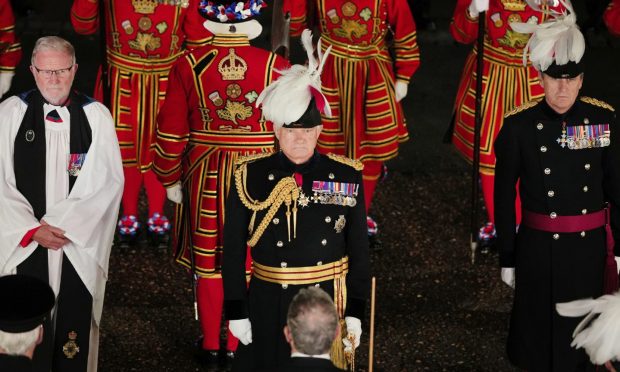

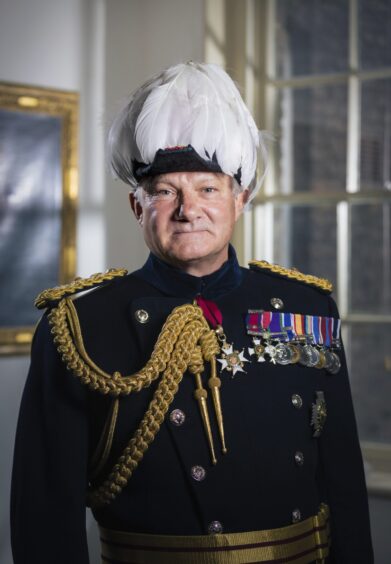


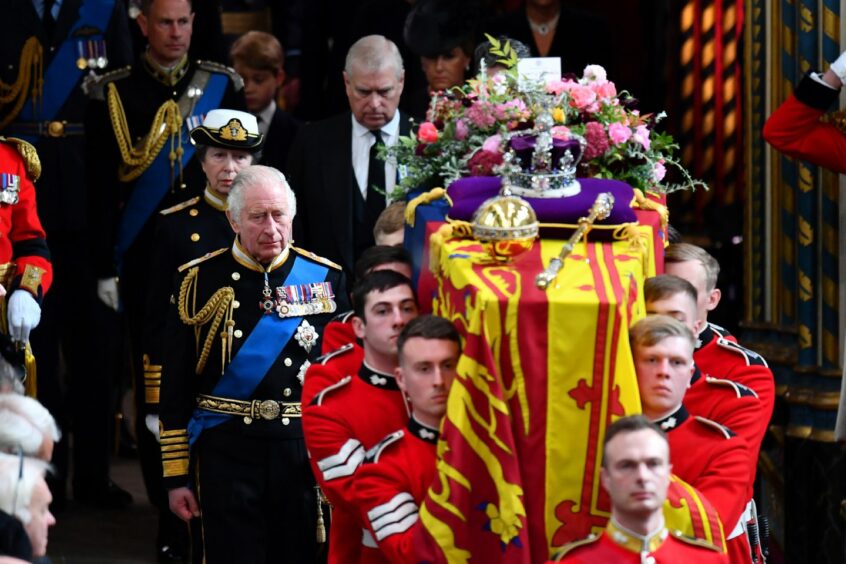
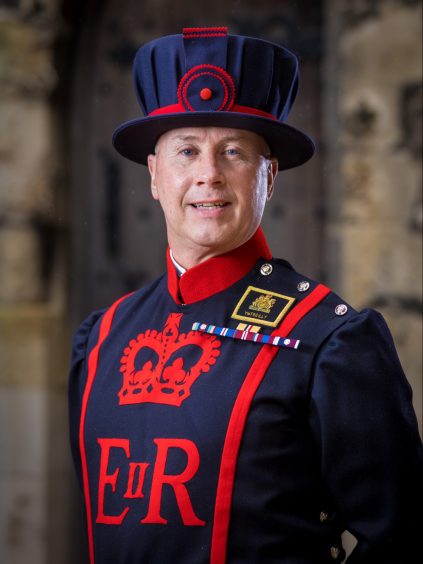


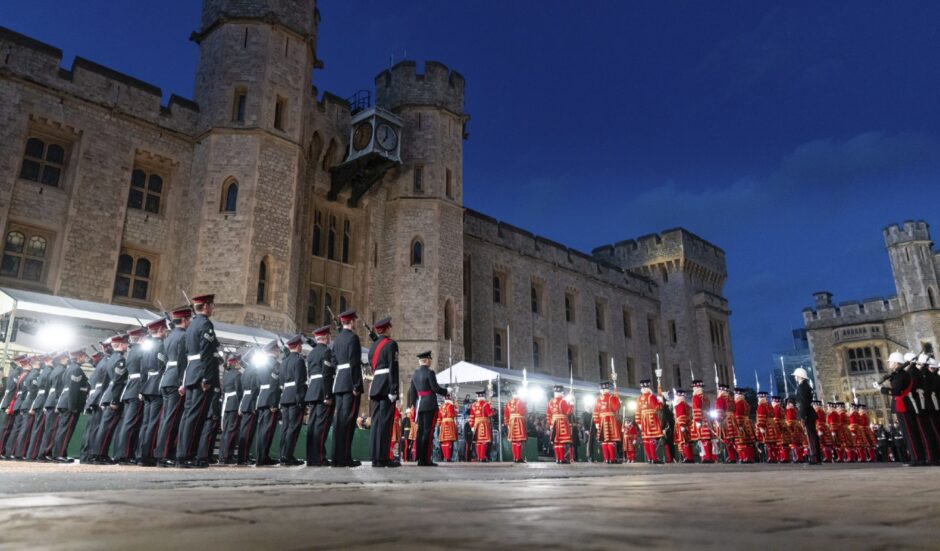

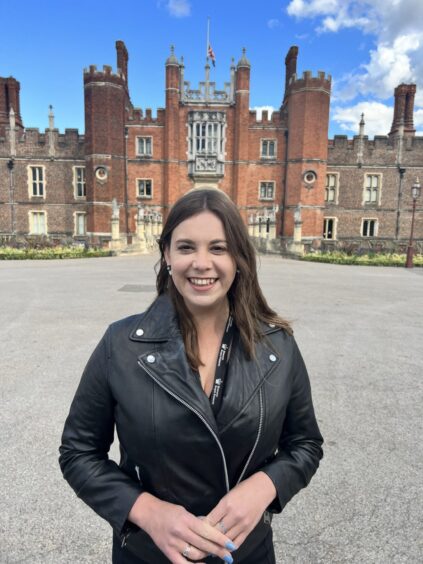


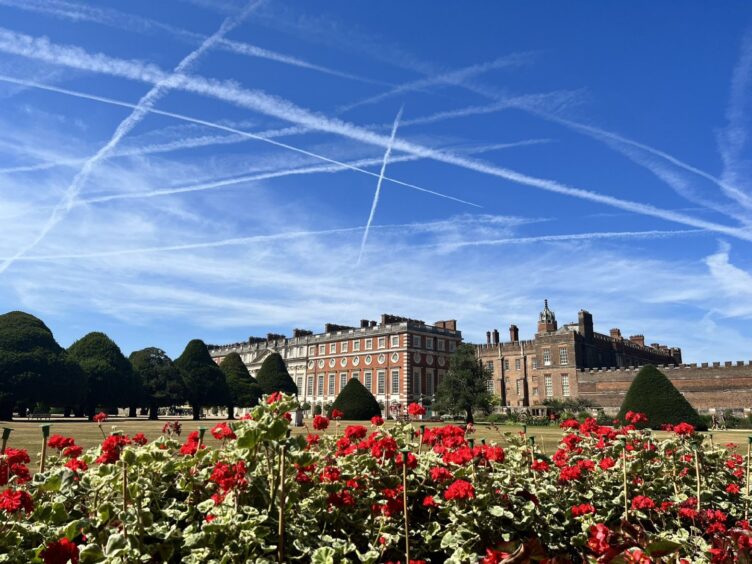



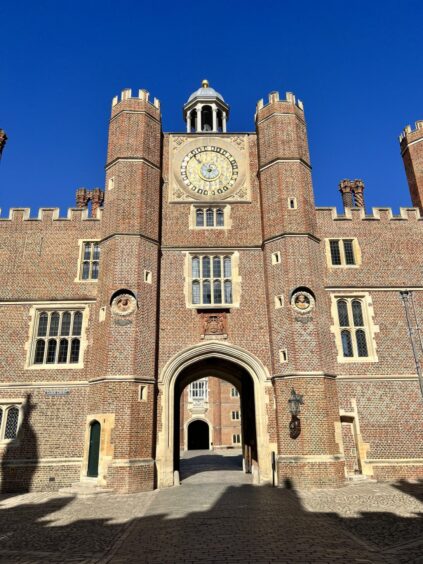










Conversation